If you’re noticing a lack of power, unusual noises, or even smoke coming from your exhaust, these are clear signs your turbo needs replacement.
Your turbocharger is a critical part of your engine’s performance, and when it starts to fail, it can affect how your car runs. A turbo in trouble will leave you feeling sluggish on the road or facing expensive repairs if ignored.
Let’s get into the signs that mean your turbocharger is on its last legs and how to spot them before it gets worse.
5 Common Causes of Turbocharger Failure
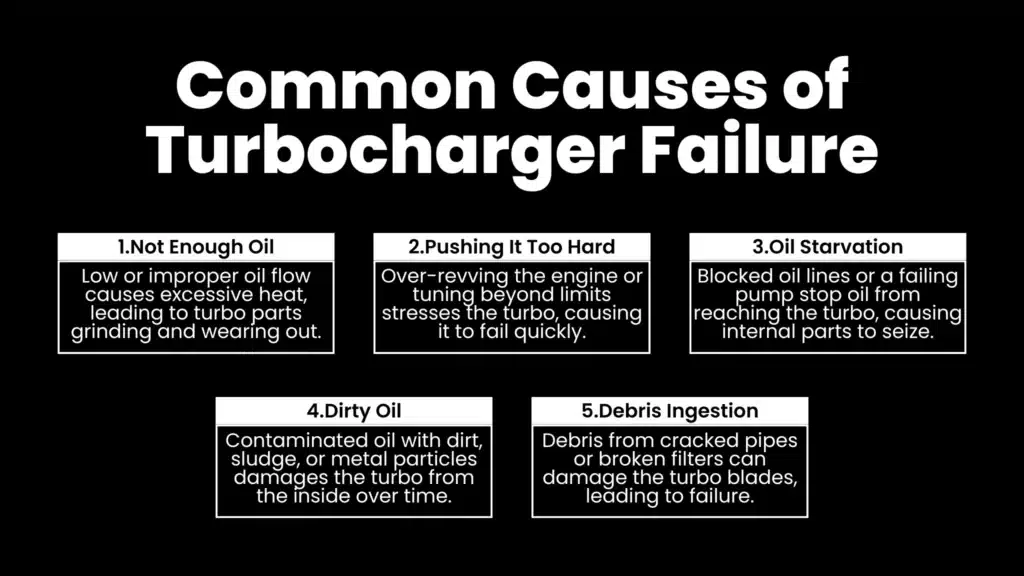
There are a few usual suspects behind turbo problems. Let’s walk through them one by one:
1. Not Enough Oil
Your turbo spins at crazy high speeds, and that creates a lot of heat. It needs oil, not just any oil, but clean, steady-flowing oil to stay cool and run smoothly.
If the oil is low or doesn’t reach the turbo properly, things heat up and start grinding. And once those parts wear out, the damage is done.
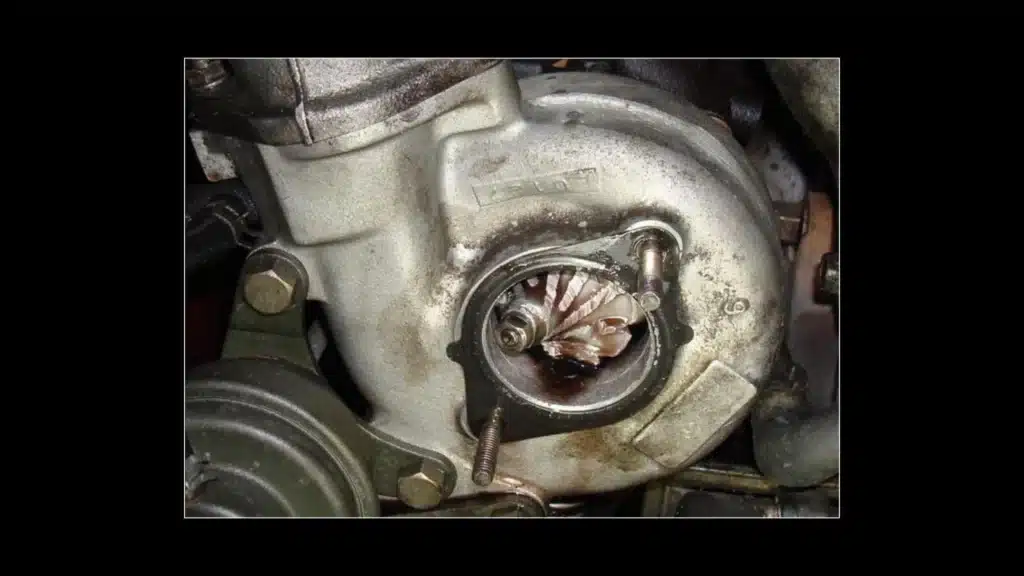
2. Pushing It Too Hard
Every turbo has its limits. It’s built to spin at a certain safe speed. But sometimes people push their engines too far, maybe with tuning or hard driving, and the turbo ends up spinning faster than it should. That extra stress can break things inside pretty fast.
3. Oil Can’t Get Through (Oil Starvation)
Even if you have enough oil in your engine, it still needs to actually get to the turbo. A blocked line or a bad oil pump can stop the flow.
And when there’s no oil moving through, parts inside the turbo start seizing up. Once that starts, the damage is usually permanent.
You may also enjoy reading: Vehicle Lighting and Electrical Systems: A Complete Beginner’s Guide
4. Dirty Oil (Oil Contamination)
Turbochargers are sensitive. They need clean oil that is free of dirt, sludge, or metal bits. If you’re running old, dirty oil or if your oil filter isn’t doing its job, it’s like pouring grit into the turbo. Over time, all those tiny particles wear things down from the inside out.
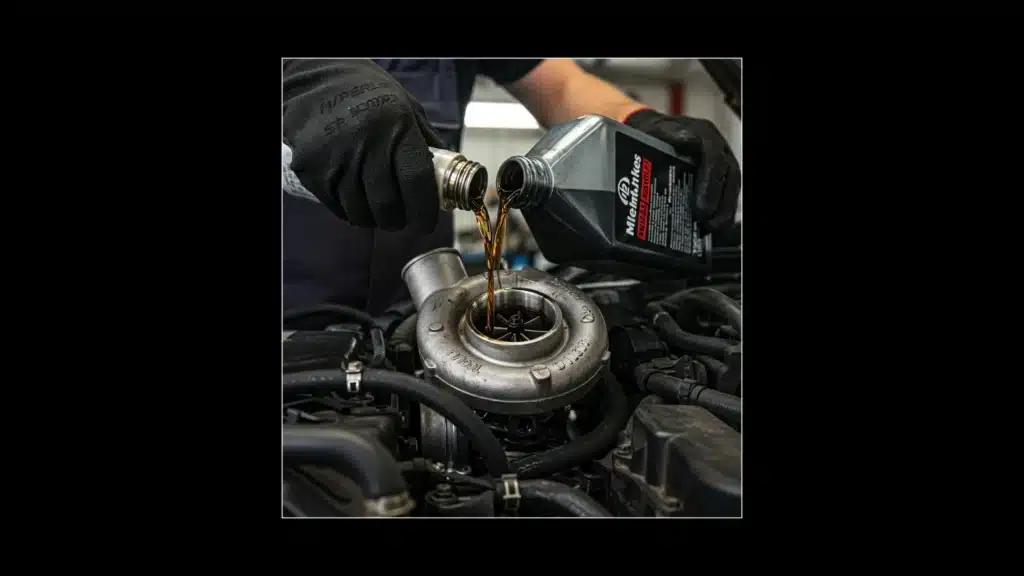
5. Stuff Getting Sucked In
This one’s pretty straightforward. A small piece of debris gets into the turbo through a cracked air pipe or a broken filter, and it can do serious damage.
At the speeds a turbo spins, a pebble can destroy the blades. Keeping your air intake clean and sealed really helps avoid this.
You may also like to read: Turbo Installation Guide: Step-by-Step for Beginners in 2025
Signs Your Turbo Needs Replacement: Don’t Ignore These Warning Signals
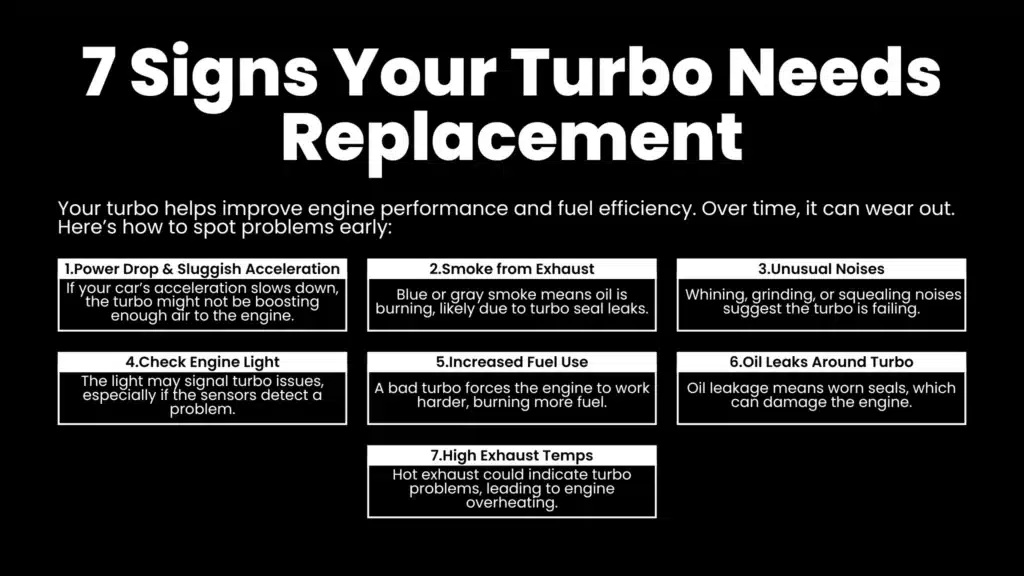
The turbo in your car helps your engine run stronger and saves fuel. But over time, it can wear out. If it starts to go bad, your car won’t feel the same. Fixing it early can save you money. Here’s how you can tell something’s wrong.
You may also like to read: Is a Luxury Car Worth It?
1. Power Feels Off or Acceleration Drops
If your car doesn’t pick up speed like it used to, the turbo might be the issue. You press the gas, but it feels slow. The engine isn’t getting the power it needs. That usually means the turbo isn’t boosting enough air.
2. Smoke from the Exhaust
Seeing a lot of smoke from your exhaust? Especially blue or gray? That’s a bad sign. It means oil is getting into the exhaust and burning. The seals inside the turbo might be leaking. If you ignore it, it can get worse fast.
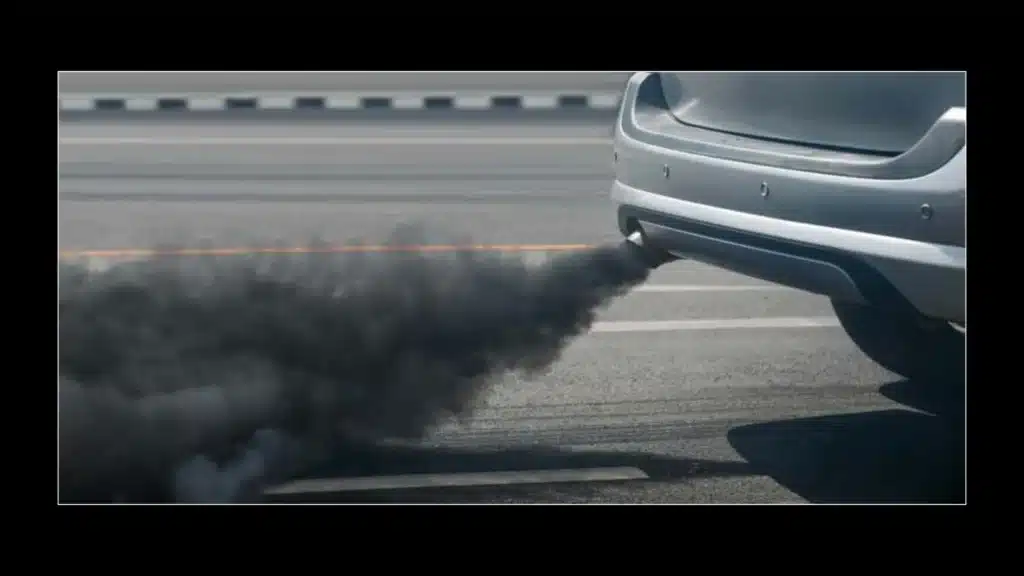
3. Weird Noises from the Engine
Hear a whining or grinding noise when driving? That could be the turbo. It’s supposed to make a soft whoosh sound. But if parts inside are worn out, they make strange noises. That means trouble is coming.
4. Check Engine Light Comes On
If the check engine light turns on, don’t ignore it. It might be because the turbo isn’t working right. Some cars have sensors that notice when the turbo isn’t doing its job. That light is your warning.
5. Using More Fuel Than Usual
Need to fill up more often? That’s not normal. A bad turbo makes the engine work harder. And that burns more fuel. Your mileage goes down even if you drive the same way.
6. Oil Around the Turbo
See oil around the turbo or dripping underneath? That means something’s leaking. The turbo seals might be worn. If oil keeps leaking, it can damage the engine too. Best to check it right away.
7. High Exhaust Temperatures
If the exhaust feels hotter than usual, that’s not good. The turbo might not be working properly. That can make the engine run hot. Over time, this can hurt other parts too.
Want to sell your luxury car, yacht, or cruise? Contact us now!
FAQs
1. How to know when a turbo is going bad?
Some signs are as follows:
- Slower acceleration or noticeable drop in power
- Excessive smoke from the exhaust (blue or black)
- Unusual sounds, like whistling or grinding, especially when you rev the engine
2. When should a turbo be replaced?
If you’re noticing any of these:
- Strange noises from the turbo
- Oil leaks around the turbo
- A drop in engine performance, like less power or efficiency
3. How do I know if my turbo is in good condition?
A healthy turbo usually means
- Smooth, responsive acceleration
- No strange noises or smoke from the exhaust
- No oil leaks or noticeable damage on the turbo itself
4. Is it OK to drive with a bad turbo?
It’s not recommended, and here’s why:
- Driving with a bad turbo can cause more engine damage
- Your car’s performance will suffer, and you might risk even bigger issues down the road
5. What does a bad turbo sound like?
If your turbo is on the way out, you might hear:
- Whining, whistling, or grinding noises
- These sounds usually mean the bearings are worn, or something inside is damaged.
Final Words
If you see slow acceleration, smoke, or weird noises, don’t wait too long to get it checked. Catching issues early will save you a fortune. Your turbo helps with performance and fuel efficiency. If it’s struggling, so will your car.
Regular oil changes and keeping it clean will keep it running sweet. If you’re not sure about your turbo’s health, get it looked at by a pro. Don’t ignore the signs; your car will thank you for it!
If you want more information about luxury cars, then explore our website.

